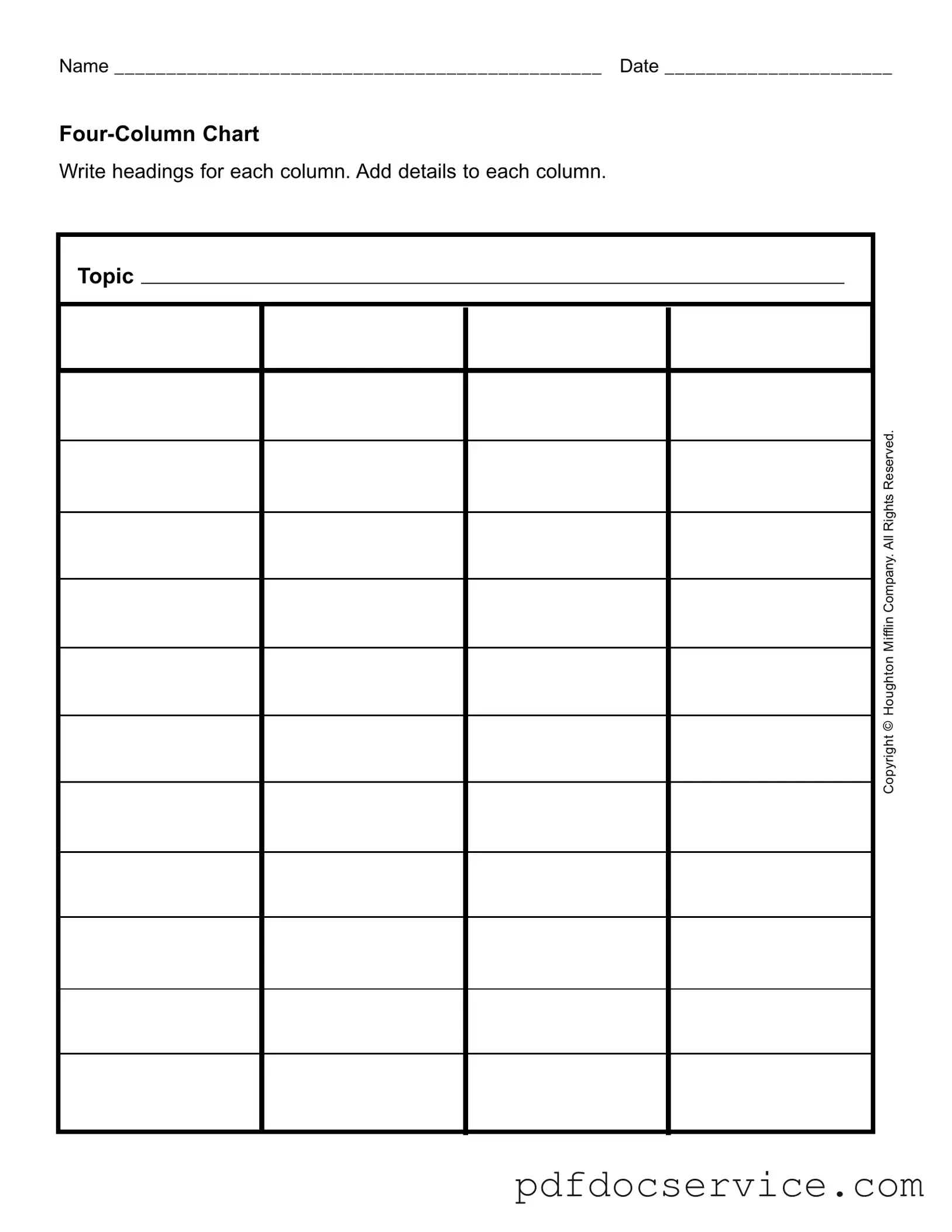The Four Column Chart form is a useful tool for organizing information. It helps individuals or teams break down a topic into four distinct categories. This can be beneficial for brainstorming, project planning, or summarizing complex information. By structuring data this way, it becomes easier to analyze and understand.
To fill out the form, start by writing the topic you want to explore at the top. Then, label each of the four columns with headings that are relevant to your topic. After that, add details to each column under the appropriate headings. This method allows for a clear comparison and organization of ideas.
What types of topics can I use the Four Column Chart for?
You can use the Four Column Chart for a wide range of topics. Here are a few examples:
-
Project planning
-
Comparing products or services
-
Analyzing pros and cons
-
Summarizing research findings
Essentially, any subject that requires organization and analysis can benefit from this chart.
Can I use the Four Column Chart for group projects?
Absolutely! The Four Column Chart is great for group projects. It allows team members to contribute their ideas in an organized manner. Each person can focus on one column or share insights across all columns. This collaborative approach can lead to more comprehensive results and foster teamwork.
There is no strict format for the headings in the Four Column Chart. However, it’s best to choose headings that clearly reflect the information you want to include. Make sure the headings are concise and relevant to the topic. This clarity will help everyone understand the chart at a glance.
Can I modify the Four Column Chart to suit my needs?
Yes, you can modify the Four Column Chart to fit your needs. Feel free to adjust the number of columns or change the headings as necessary. The goal is to create a tool that works best for you and your specific situation. Adaptability is one of the strengths of this chart.
The Four Column Chart form can often be found in educational resources, project management tools, or templates online. You can also create your own version using a word processor or spreadsheet software. Just make sure to include the four columns and a space for the topic at the top.
